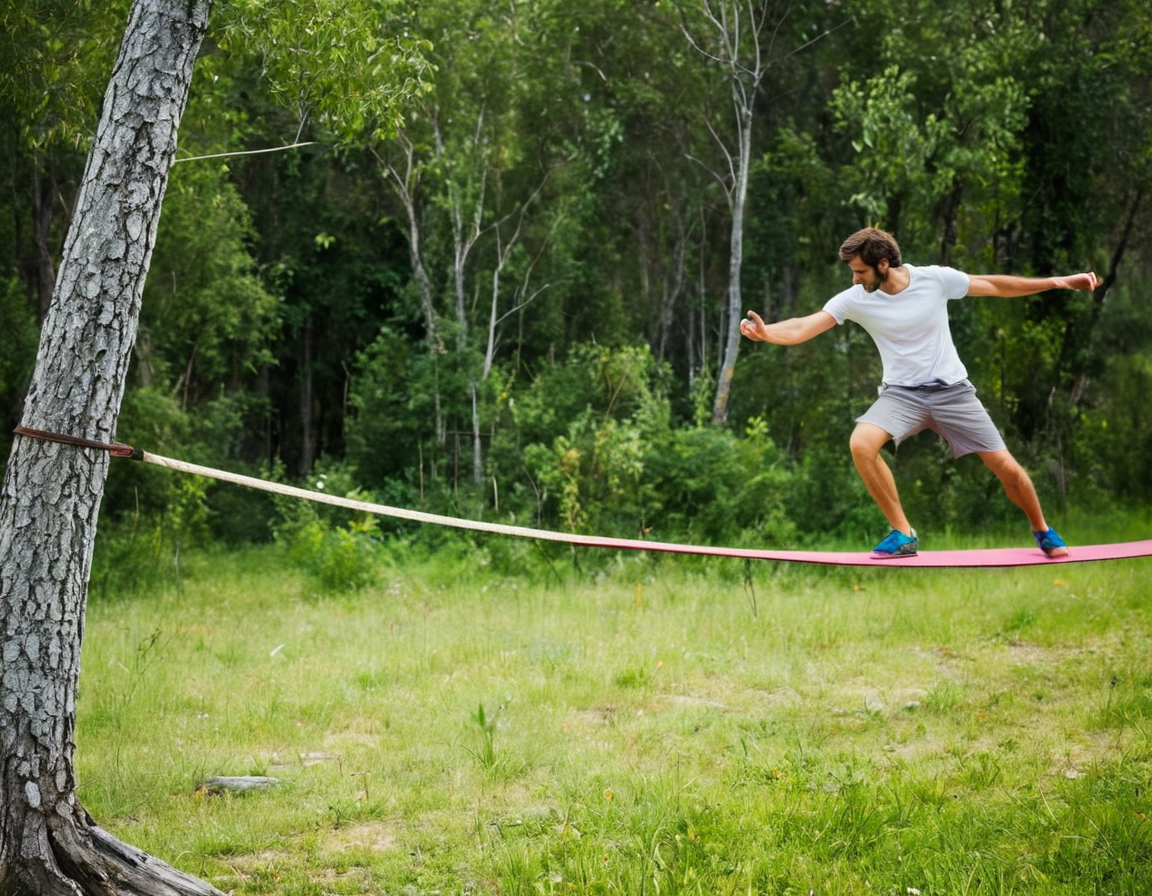Slacklining: The Art of Balance and Fun

Have you ever walked on a tightrope? It’s quite the experience, isn’t it? But what if I told you there was an easier way to enjoy that same sense of balance and fun without having to join the circus or spend years practicing in a big top tent? Enter slacklining.
Slacklining is essentially walking on a thin, elastic band suspended between two anchors – much like a tightrope but with more give. It’s an activity that combines elements of yoga, balance training, and fun into one exhilarating package. And the best part? You can do it almost anywhere! Learn more about TDMRZXVK
The History of Slacklining
Slacklining has its roots in the world of rock climbing. In the 1970s, climbers began using nylon webbing as a training tool to improve their balance and coordination. They would set up these slacklines between trees or cliffs and practice walking across them. Over time, this simple yet challenging activity evolved into what we now know as slacklining.
How to Get Started with Slacklining
Getting started with slacklining is relatively easy. All you need is a slackline kit, which includes the line itself, two anchors (such as trees or poles), and some ratchet straps to secure the line between your chosen anchor points. Once you have your gear, find a suitable location – ideally somewhere with flat ground and sturdy anchor points.
Start by setting up your slackline at a low height, around hip level. This will allow you to practice walking without feeling too high off the ground. As you become more comfortable and confident, gradually increase the height of your line until you’re ready for those daring high-wire acts!
Tips for Successful Slacklining
1. Start with short sessions: Just like any new skill, it takes time to develop balance and coordination on a slackline. Begin by practicing in short sessions (around 10 minutes) and gradually increase your time as you become more comfortable. Learn more about
2. Focus on your center of gravity: Keeping your weight centered over your feet is crucial for maintaining balance on the line. Practice standing with your feet hip-width apart, knees slightly bent, and core engaged to find this balanced position.
3. Use your arms wisely: While it may be tempting to reach out for stability, using your arms too much can throw off your balance. Instead, focus on keeping them close to your sides and making small adjustments as needed.
4. Breathe deeply: Staying calm is essential when attempting any new physical activity, especially one that requires such precision and concentration like slacklining. Take deep breaths throughout your practice sessions to help you stay relaxed and focused.
Slacklining Benefits
In addition to being a fun way to challenge yourself physically and mentally, slacklining offers numerous health benefits:
1. Improved balance and coordination: The very nature of walking on an elastic band requires constant adjustments to maintain your center of gravity, leading to improved overall balance and body awareness.
2. Core strength development: Engaging your core muscles is essential for maintaining stability on the slackline, resulting in a stronger midsection over time. Learn more about TossOff
3. Stress relief: The combination of fresh air, natural surroundings (if you’re lucky enough to be able to set up your line outdoors), and the meditative nature of walking slowly across the line can provide an excellent opportunity for relaxation and stress relief.
4. Fun with friends or family: Slacklining is a social activity that allows you to bond with others while enjoying the great outdoors together. Plus, it’s always more fun when someone else is trying to walk along beside (or above) you!
In conclusion, slacklining offers an exciting and accessible way for people of all ages to improve their balance, coordination, and overall well-being. Whether you choose to practice alone or with friends, this activity provides endless opportunities for fun and personal growth. So why not give it a try? You might just discover your new favorite hobby!

